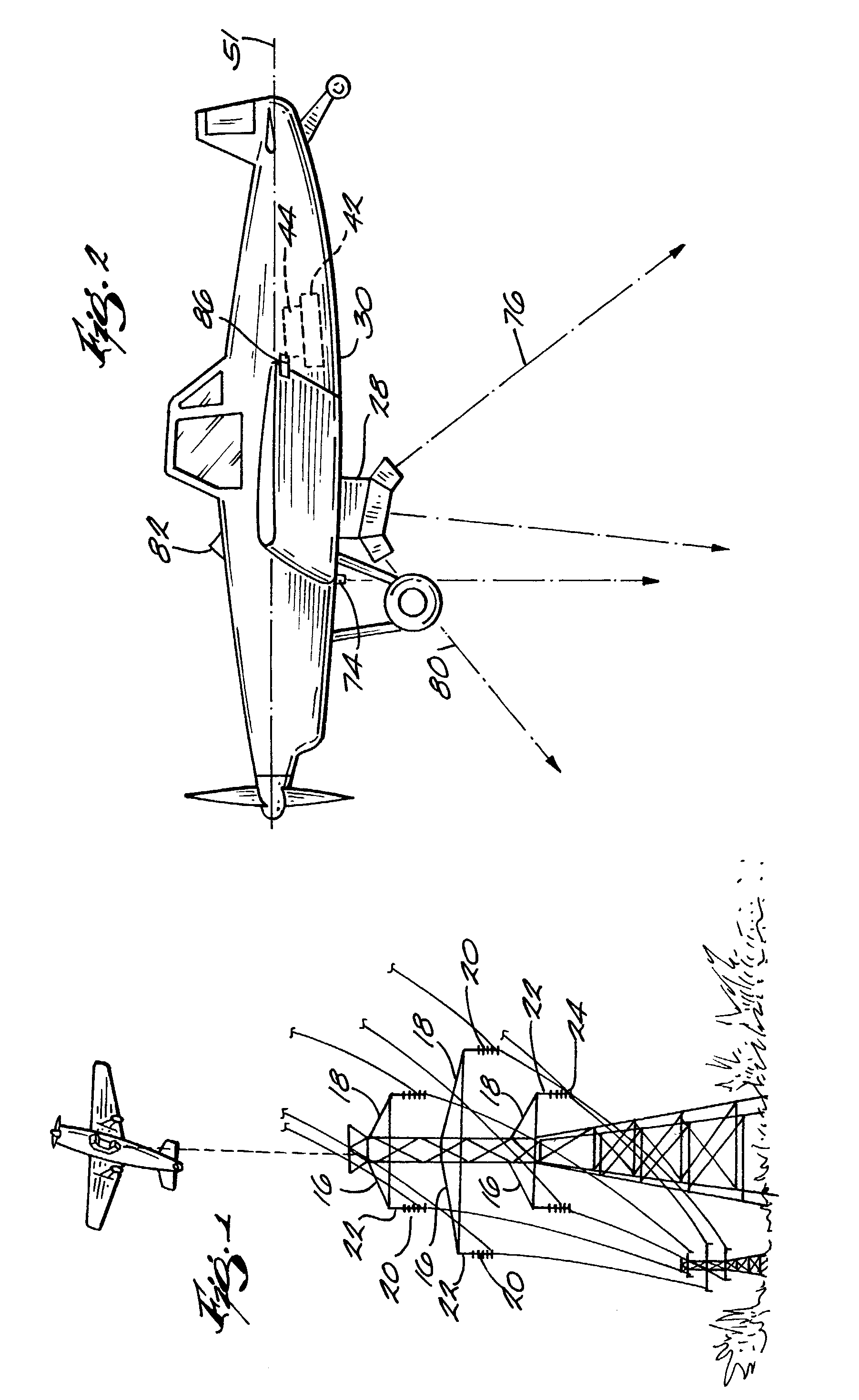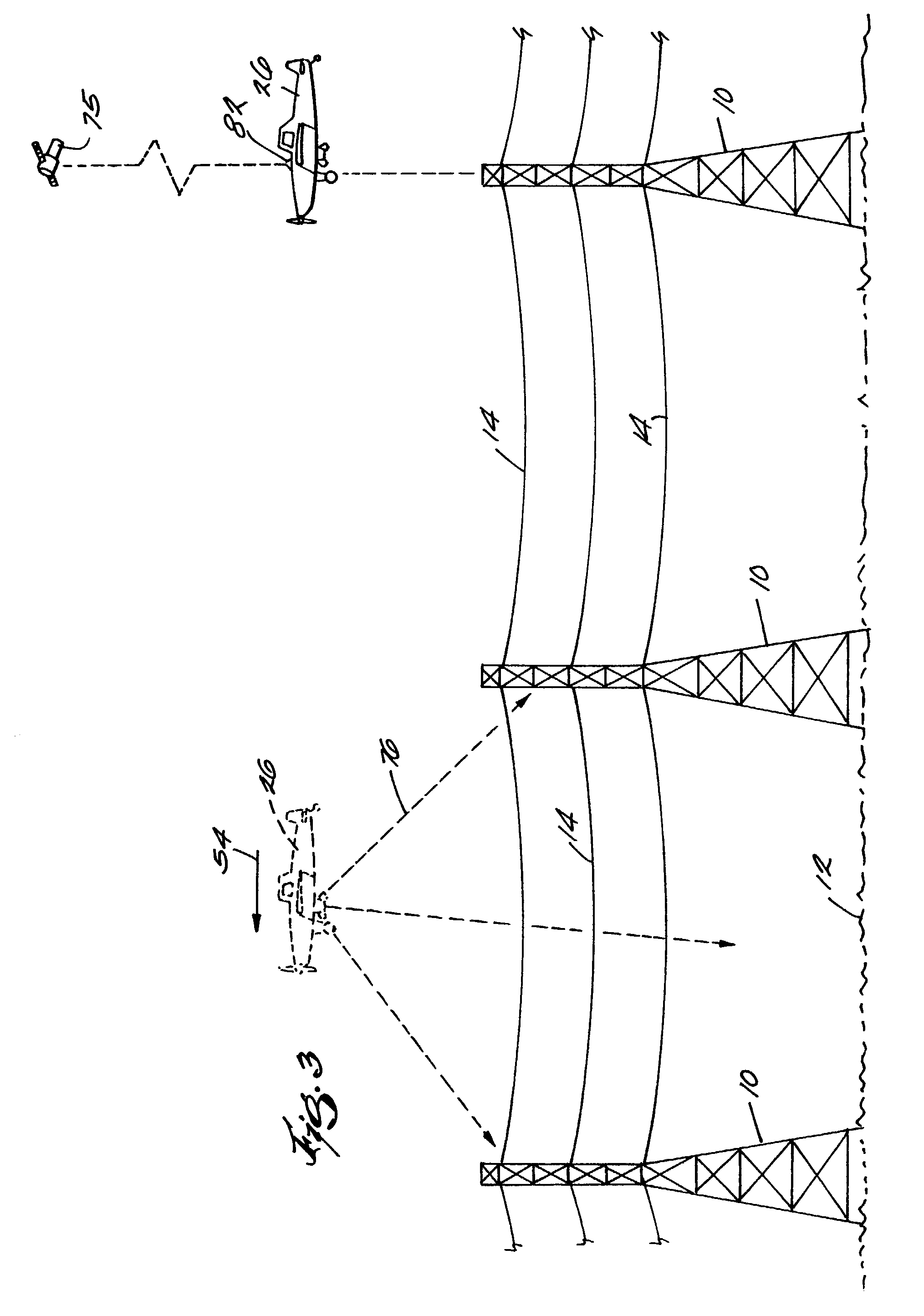Airborne inventory and inspection system and apparatus
an inventory and inspection system technology, applied in the field of airborne inventory and inspection system, can solve the problems of high cost, high cost, data acquisition, image quality, etc., and achieve the effect of improving the quality of the photos being taken
- Summary
- Abstract
- Description
- Claims
- Application Information
AI Technical Summary
Benefits of technology
Problems solved by technology
Method used
Image
Examples
Embodiment Construction
[0036]Electrical power is conveyed over transmission lines between power generating plants, field stations, states and the like. In their most basic configuration, these systems include towers 10, which in major part are uniformly spaced along the terrain 12 a desired distance, for example, two-tenths of a mile apart. Transmission cables or lines 14 are strung between the towers and suspended above the terrain. The towers can be of various heights as measured from the surface of the terrain, for example from 80–120 feet high. Transmission cables are supported at the tower structures by a combination of a laterally extending arm, or arms, 16 and 18. Insulators 20 are connected to the arms 16 and 18 with associated hardware 22 and 24. The transmission cables are anchored at the towers, specifically at the insulators, by the hardware 22 and 24 and the insulators maintain the necessary spacing between cables to ensure electrical isolation. The insulators and related hardware connections...
PUM
 Login to View More
Login to View More Abstract
Description
Claims
Application Information
 Login to View More
Login to View More - R&D
- Intellectual Property
- Life Sciences
- Materials
- Tech Scout
- Unparalleled Data Quality
- Higher Quality Content
- 60% Fewer Hallucinations
Browse by: Latest US Patents, China's latest patents, Technical Efficacy Thesaurus, Application Domain, Technology Topic, Popular Technical Reports.
© 2025 PatSnap. All rights reserved.Legal|Privacy policy|Modern Slavery Act Transparency Statement|Sitemap|About US| Contact US: help@patsnap.com



